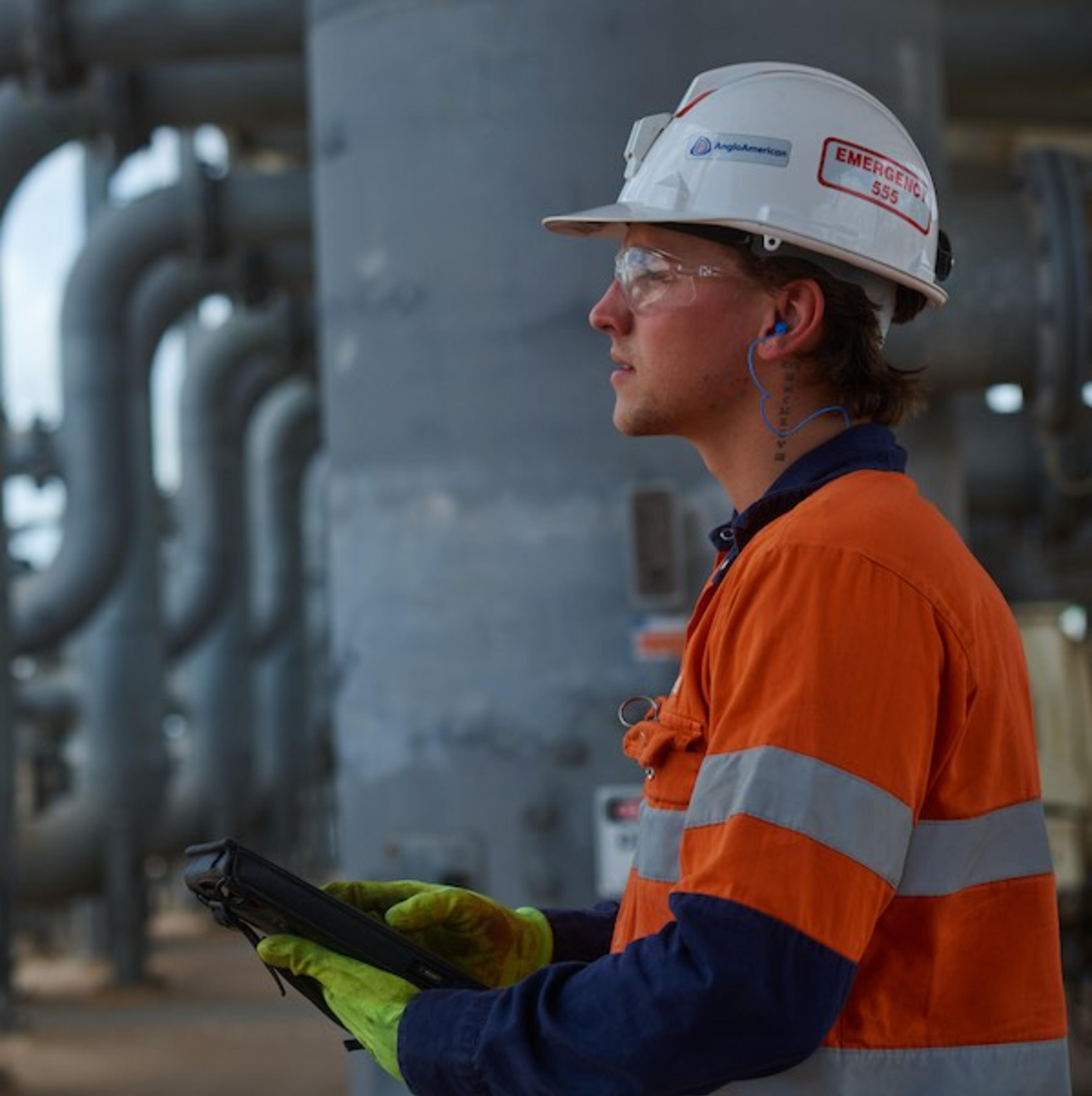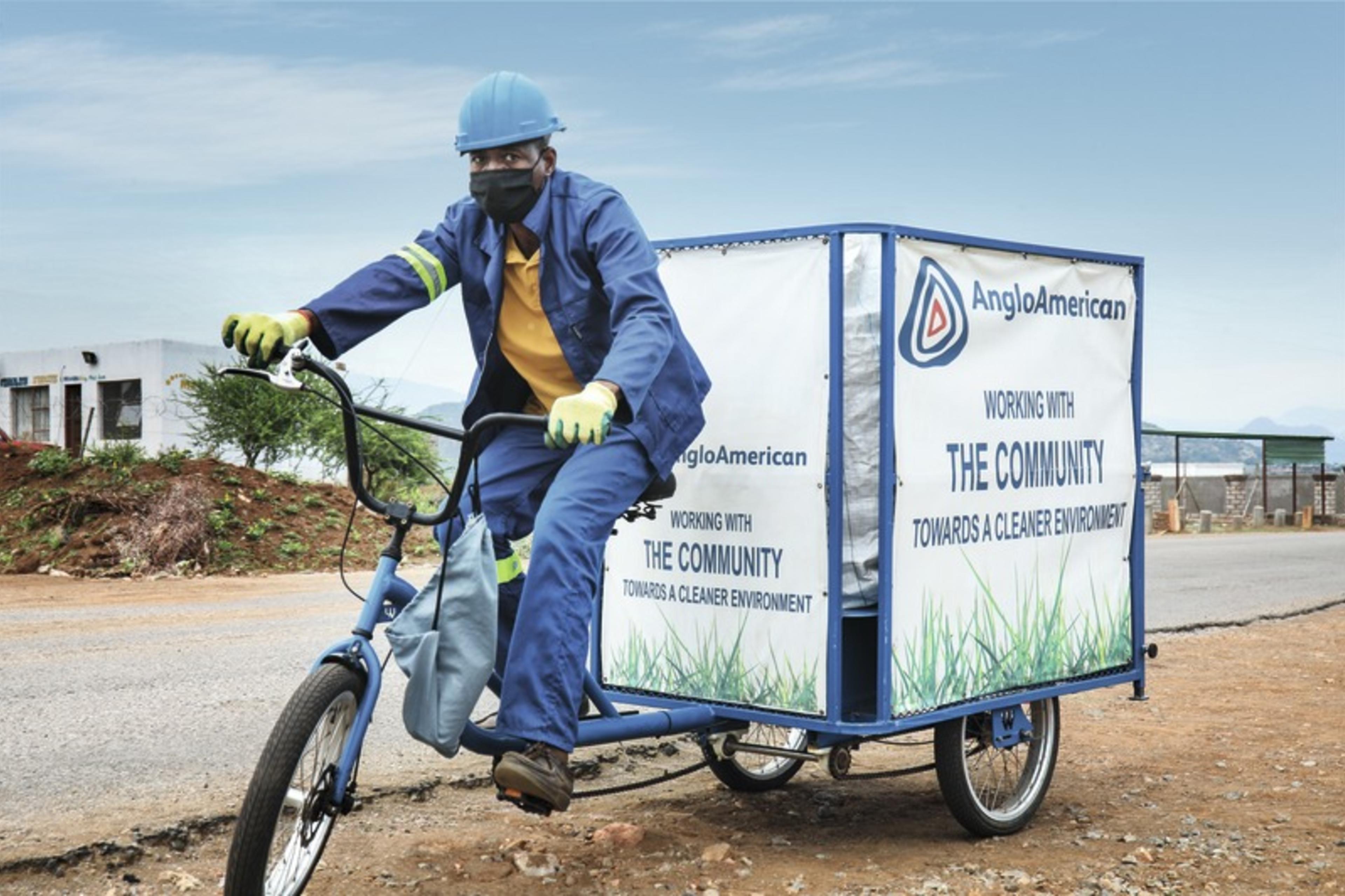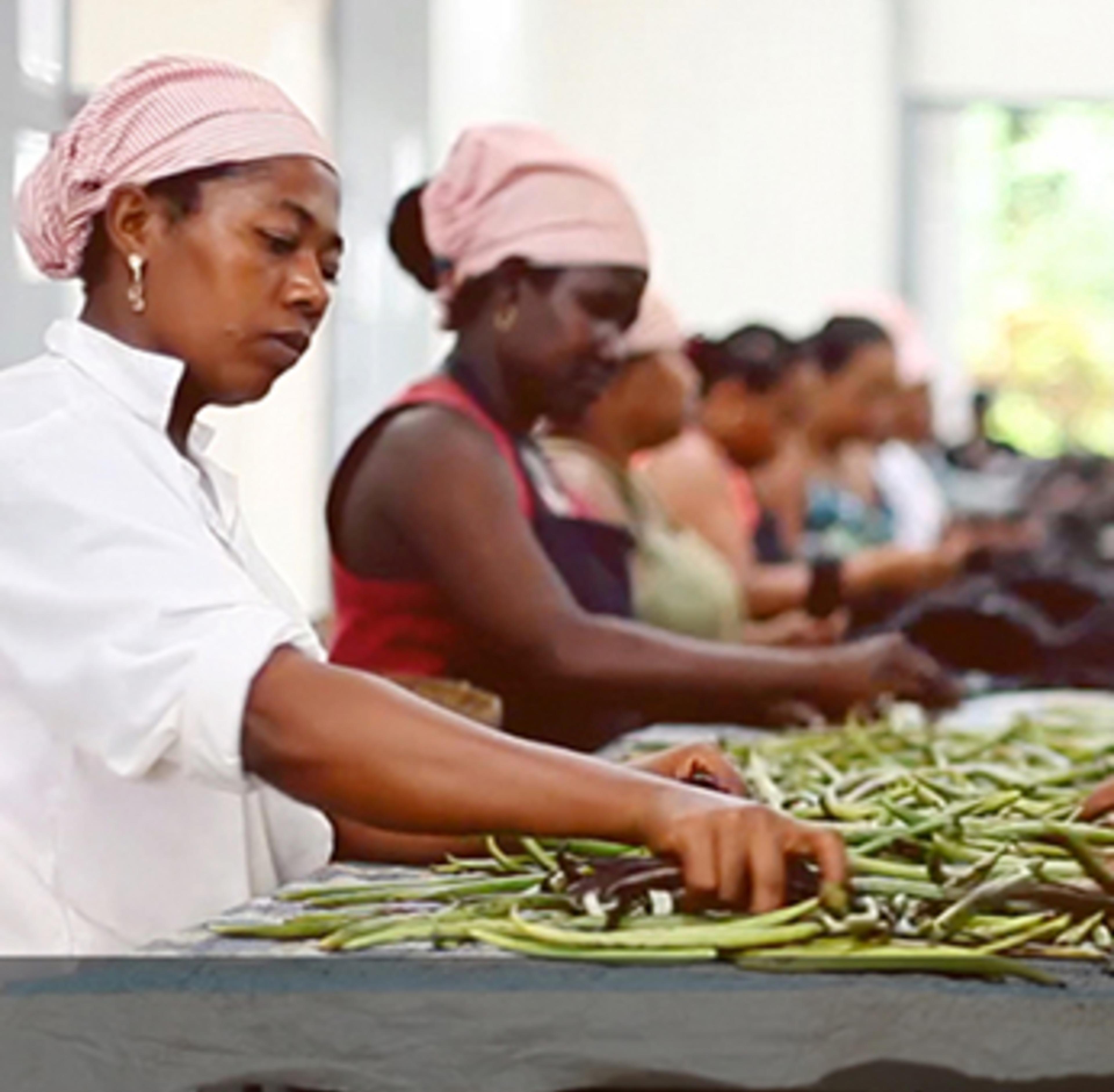
How to Improve the Impact and Scale of Social Programs: Anglo American’s Collaborative Regional Development
How to Improve the Impact and Scale of Social Programs
Jon Samuel and Mzila Mthenjane discuss how Anglo American, Exxaro and partners have designed and adapted the Collaborative Regional Development (CRD) and Impact Catalyst programs.
Introduction
Anglo American is one of the world’s leading mining companies, employing more than 100,000 people in operations around the globe. To support its purpose and social license to operate, it recognizes the need to partner and help create economic opportunities with governments, businesses, civil society, communities, and indigenous peoples.
Jon Samuel, Anglo American’s Group Head of Responsible Business Partnerships, and Mzila Mthenjane, Exxaro’s Executive Head, Stakeholder Affairs, discuss how Anglo American and its partners have designed and adapted their Collaborative Regional Development (CRD) program in order to effectively address some of the most compelling social needs and opportunities in each region.
Key lessons to take away
Leverage opportunities for local development and economic empowerment to strengthen your license to operate, open new markets, and build resilience.
Develop strategic, creative approaches to collaboration and partnerships that catalyze economic opportunities and create shared value within regions and countries.
Conduct thorough assessments at the outset, using all available data sources to find the opportunities with the greatest social needs and benefits.
Make sure there is a demand for action, that the project design fits the local context, and that the appropriate enabling conditions are in place to support the initiative.
Build a coalition of partners willing to make real contributions and meaningful commitments to the initiative.
Plan for the long-term and take action to maintain momentum along the way, including regular, consistent communication.
How Anglo American's Collaborative Regional Development (CRD) program works
Anglo American’s Collaborative Regional Development (CRD) approach identifies the socio-economic development opportunities with the greatest need and potential for impact, and then develops a series of partnerships with key sectors and organizations in the region. Examples of CRD initiatives include:
In Latin America, the company is working with TechnoServe and other partners to support and develop local entrepreneurs and small businesses, helping them build the skills and capacity to grow and thrive.
In South Africa, the Impact Catalyst partnership, which Anglo American and Exxaro are key members of, is empowering black entrepreneurs to start their own businesses or grow existing ones. It has enabled funding for 1,885 businesses to date, which have employed more than 38,000 people.
Informed by the Development Partner Framework, CRD enables Anglo American and its partners to expand their reach and impact far beyond mining sites, and helps align the efforts of many organizations to initiate projects that no one partner could catalyze on their own. “This gives us the opportunity to create shared value for our host regions and national governments,” says Jon. “It helps to create alternative livelihoods for people at a time when mines are becoming more automated and need less labor. It also helps to limit a community’s dependence on mining sites for jobs and income.”
Supporting regional development also helps provide access to new national or international markets, which brings money into a region. “All of this contributes to securing and strengthening our social license to operate in each community, region, or country,” adds Jon.
“These partnerships allow us to deliver on our commitment to build the foundation for long-term, sustainable development in our host regions, far beyond the lifecycle of the mine. This is about helping to stimulate local economies, promoting local and inclusive procurement initiatives, as well as enterprise and supplier development, and developing young people.”
- Jon Samuel
The key challenges – and how Anglo American is overcoming them
1. Figuring out the model for delivering more impact and better outcomes
Anglo American has been investing in socio-economic development programmes for over 70 years, but by 2010 it had realized the limitations of its initial approach which focused on host communities. “We were able to get projects up and running, but often found that they weren’t scalable, and there was little ability to expand impact beyond the host communities where we operated,” adds Jon. “Other mining companies were doing the same. So, rather than focusing on similar projects, we wondered how we could collaborate more across the mining sector.”
Anglo American is good at building things and had done plenty of infrastructure projects in rural areas, but it didn’t always see impactful outcomes on the back of building alone, explains Jon. “We spent money but didn’t get the impact we expected. That’s because building schools and medical clinics doesn’t necessarily lead to better community outcomes. After all, public services aren’t always able to use the infrastructure effectively for a myriad of reasons, including funding, staffing requirements and local expertise. So, we realized the need to focus more on building capacity, empowering participants, and working together with partners in these areas.”

2. Understanding where to focus efforts in each community, region and host country
One of the challenging aspects of development initiatives and CRD is figuring out the right approach. Plans that work in one location or country often aren’t appropriate for another area. What at first appears like a good approach may not get at the real root causes of social issues, or fit well with local infrastructure and economic capabilities. More formulaic approaches often fail to unlock the best opportunities for impact, so it is crucial to design an approach that really fits with local needs and contexts.
“If you see that a prosperous country has roads, you might be tempted to build roads to become prosperous. The issue is that prosperous countries have a demand for roads. It’s cause and effect. There needs to be a demand for action.”
- Jon Samuel
In response to this challenge, each CRD initiative begins with a full analytical assessment of the available social development opportunities that are available. “We’re trying to look for the untapped resources that could support sustainable development activity.”
“There’s no secret, black-box-type technology that we use for this. We simply access publicly available datasets, including census information, satellite data, climatic data, and consult with stakeholders. For an agriculture project for example, we can use this to understand things like soil types and rainfall patterns as well as market demand, and establish where support and intervention might be needed. Then we can use these insights to help determine the most appropriate crops for farmers to grow in a certain region.”
“Through stakeholder consultation, we explore what the communities have expressed as an interest and combine this with a realistic assessment of what is actually feasible in the local context. Then we can start to think about how a project might be implemented,” he says.
Cyber Security Apprenticeship Example
The CRD process has taken Anglo American in different directions in its pursuit of improving people’s lives. For example, the company’s Cyber Security Apprenticeship initiative is a direct result of the company “trusting the process” and “letting the research guide our work.”
In the north of England, Anglo American is developing its Woodsmith Project, a new fertilizer mine. Close by in Scarborough is an important base for GCHQ, the UK government’s intelligence, security, and cyber agency. “GCHQ is a world class center of expertise in cyber security, and local councils and universities wanted to partner with it to build the UK’s skills base and support the creation of good local jobs. However, for the plan to succeed they needed a corporate partner who could commit to recruiting talent locally over a number of years, which is where we were able to step in."
“We started working with a local university to develop a course on cyber security. GCHQ provides expertise on best practices within the field. The university uses GCHQ’s guidance to ensure that the course reflects those best practices. So far, we have taken on more than 12 cyber security apprentices. We’re the anchor of the program, but other organizations in the public and private sectors can also start to hire from that same pool of students.”
3. Building strong partnerships with external organizations
“From an innovation and financial perspective, this wouldn’t be possible without bringing these different partners together to collaborate and create these catalytic projects,” observes Mzila. CRD is all about building a coalition between businesses, community groups, and governments – and then using that coalition to engage and act. However, getting buy-in and participation from all these stakeholders can be more complicated than you might think, notes Jon.
“You need a degree of strategic patience when doing social development work. Be careful of who you partner with,” cautions Jon. “There is a difference between partners and contractors. People get to be involved when they actually contribute. Partners need to put appropriate resources in, not take resources out of projects.”
A high level of commitment from partners is especially important considering the amount of effort that goes into making collaboration work effectively. Mzila finds it valuable to bring external partners inside to work directly with their company counterparts. For the Impact Catalyst program in South Africa, partners spend time working with colleagues in an Exxaro environment at least once a week. That exchange helps to create the familiarity and understanding that are so important for the partnership to function effectively and achieve its potential, Mzila says.

4. Working with government partners
Big business can be seen as a threat to local governments, and that can cause an imbalanced power dynamic. “They get more comfortable when we approach these discussions as a partnership, recognizing the lead role that government should take,” says Jon. “It’s also more helpful for governments if they are engaged by a coalition, rather than by separate companies all approaching with their own separate ideas.“
Many governments have aspirational regional development plans which guide the work they do. Regional development planning often reflects what politicians and the public want in that region, rather than what the actual, best untapped opportunities are. “It is part of our responsibility to help route those plans and intentions back towards a realistic assessment of what is feasible in that context,” Jon observes.
He advises taking a proactive approach to working with and supporting governments. Anglo American acts as an advisor where it is welcome and supports development, taking a highly collaborative and consultative approach. If done well, governments often welcome input and expertise that the business and its partners can bring to help advance local social development, including creating new economic and job opportunities.
When government officials push back due to their policy agenda, there are two paths to consider, says Jon. “If we think they’re wrong, we will build a case and present it. If the feedback is reasonable, we will follow their lead and go with the grain.”
“Also, politicians want to demonstrate results, so the process needs to be results-oriented,” says Jon. If they think we can help them do that, and we deliver things that support their policy agenda, they support us in return.”
“You have to stand for what you believe in, but also trust that governments have a greater understanding of the local context. We recognize that governments have a democratic mandate to set regional development plans. When we provide information that feeds into these plans, and try to understand long-term policy drivers, the response is generally positive.”
- Jon Samuel
5. Working with internal teams and stakeholders
Within Anglo American, Jon’s office acts as the center for leading the development of CRD initiatives, commissioning studies, and leading projects. “Regional corporate offices may not have the necessary experience for this kind of work, so we guide the process,” he says. CRD studies are scheduled into project implementation plans, becoming a known part of the process.
There’s a lot of internal coordination needed to make sure colleagues and stakeholders are aligned and everyone buys into the vision and strategy for the initiative. While buy-in is critical, implementation is where the rubber hits the road. From Mzila’s perspective, “The really key people to get involved are the direct reports, because they're the ones who get the job done.”
Mzila mentions that people are often surprised by the modest size of his team relative to the amount of work and number of stakeholders they manage. With budgets tight for additional headcount, Mzila needs to be strategic about extending the influence and reach of the stakeholder engagement function. Along with his team of dedicated stakeholder managers, several people in each business unit play key roles when working with partner organizations. For this to work, Mzila’s team helps to train and build the knowledge and skills of colleagues who will share the load of managing relationships with stakeholders.
“I think what enables us to be effective is making the role of stakeholder management everyone’s responsibility. Our primary role is to enable the connections between stakeholders and the business and stay ahead of issues and opportunities that may impact the business.”
- Mzila Mthenjane
“One of the quickest ways to get the organization on board with stakeholder management is never to waste a crisis,” observes Mzila. “When the first stakeholder crisis occurs, that’s the beginning of a learning experience. It’s an opportunity for teaching and helping colleagues and internal stakeholders understand how to handle that type of situation.”
For Mzila, it’s also important for each stakeholder to understand how they bring value to the partnership, otherwise they can feel under-appreciated, “especially when you get labeled as a ‘cost centre’ internally. You have to take a step back from that and understand and communicate the context within which your organization is operating.” He also recommends seeking feedback through stakeholder engagement surveys to get an outside perspective and maintain positivity.
6. Planning for the long-term and maintaining momentum
Succeeding in social development work requires a long-term perspective. “It can feel quite slow in the context of a business with quarterly and half-year targets to meet,” says Jon. The first study of opportunity could take more than a year and trying to maintain enthusiasm and commitment from people internally, in the face of what feels like a slow process, can be challenging. Changes in leadership can also prove to be challenging, calling for careful management over the course of a project.
“Keeping internal stakeholders and the board informed is very important. It needs to be constant and consistent. You need to have the appropriate processes in place for communication and reporting on progress so that it becomes part of the system, and you can demonstrate the value that is being created for the organization,” advises Mzila.
Some final advice
If you want to go fast, go alone. If you want to go far, go together.
“Align around a small number of things that stakeholders want to do together. Build a coalition of the willing, between capacity in public agencies and other stakeholders. Build a team and behave like a team.” - Jon Samuel
To be more effective, you need to have less control.
“We make sure that the CRD process is not seen as an Anglo American ‘thing’. Of course, it often starts with us, but shifts to a more multistakeholder model as it develops.” - Jon Samuel


